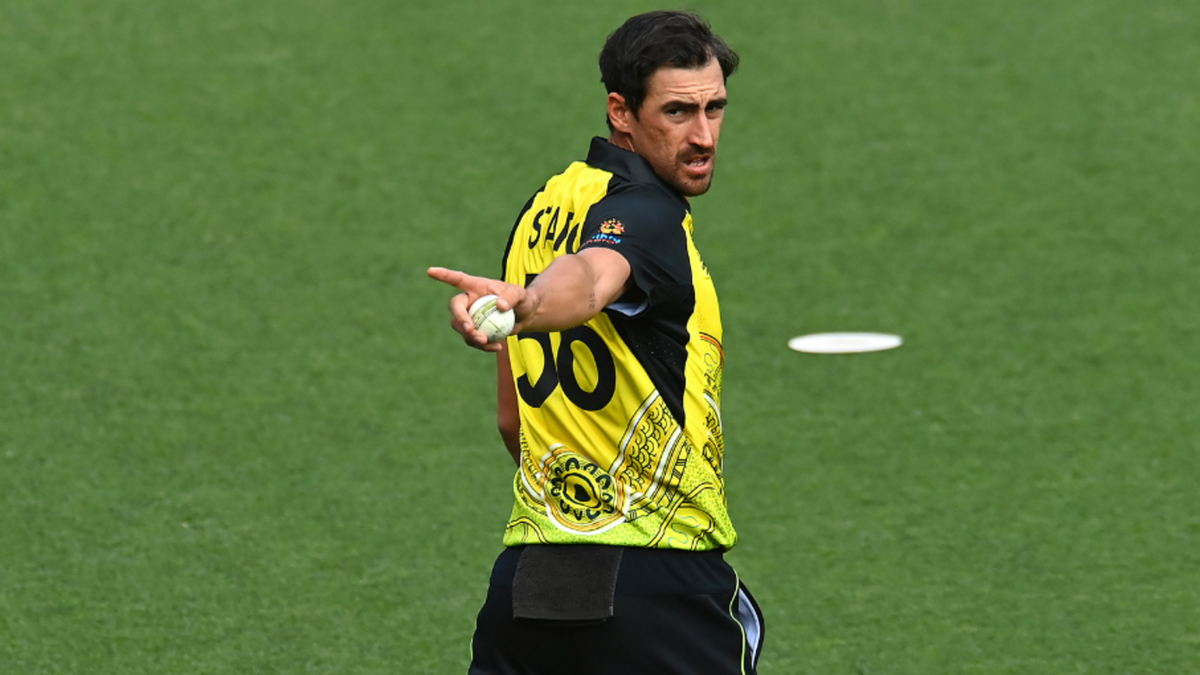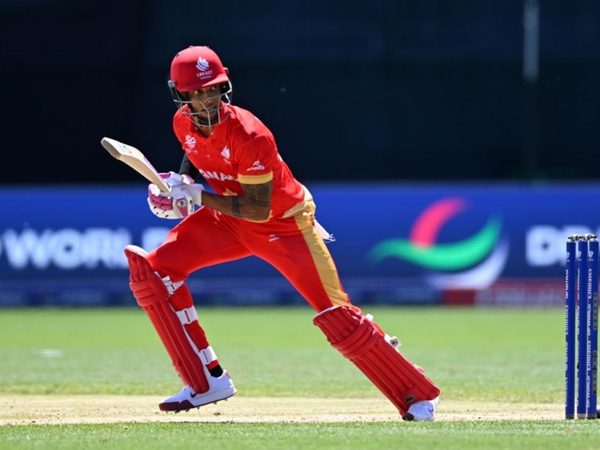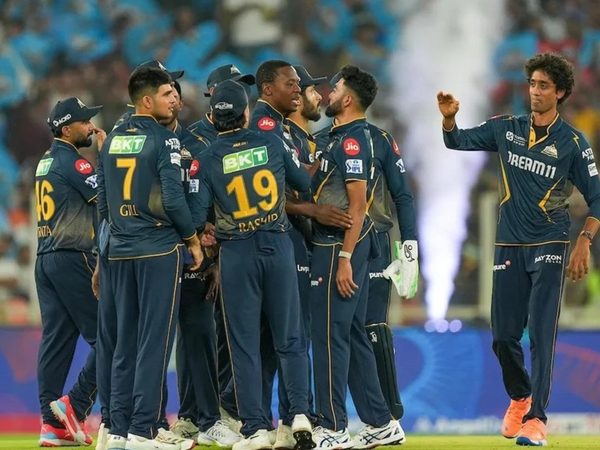
Mitchell Starc has suggested an alternative to the much-discussed mode of dismissal involving the bowler running out the non-striker. He suggested that the batting team be penalised runs with the TV umpire monitoring the movement of the non-striker instead of the latter losing a wicket if a batter backs up early, which will also help in removing the “stigma” around the dismissal.
Starc was in the news recently after he warned Jos Buttler for not being in his crease until the ball was released during the Australia-England T20I series. As he was walking back to his run-up, he was heard saying. “I’m not Deepti but I can do it”, referencing to the Indian all-rounder’s dismissal of Charlie Dean at the non-striker’s end during an ODI in September.
The run out of Dean sparked the ‘Spirit of Cricket’ debate yet again. James Anderson accused the Indian team of lacking “compassion” after they dismissed the England batter in a close game at Lord’s.
Starc assured that he would never run out a batter at the non-striker’s end. He also suggested that the batting team be deducted runs if the non-striker were out of the crease, with the TV umpire monitoring the non-striker’s position before and during the release of the ball. The umpires already track the front-foot no-ball during every delivery, and it will help remove the grey area around the dismissal and remove the controversy that erupts every time a non-striker is run out, according to him.
Speaking to The Age and The Sydney Morning Herald, Starc said, “While it is hard to do at all levels, why not take it out of the hands of interpretation and make it black and white? There are cameras for front foot no-balls, a camera there all the time [in international cricket] and someone watching the line.
“Every time the batter leaves the crease before the front foot lands, dock them a run. There’s no grey area then. And in T20 cricket where runs are so handy at the back end and games can be decided by, one, two, three runs all the time, if all of a sudden you get docked 20 runs because a batter’s leaving early, you’re going to stop doing it, aren’t you?
“Then there’s no stigma. It’s taken away from the decision to have to run someone out or think about it. If it’s blatant, it is a different story, but I feel like that is at least completely black and white.”
Starc also went on to add that though the run out has been the flavour of the month, it is unlikely to happen during the ongoing T20 World Cup. “I’m sure it’s probably going to pop its head up throughout the World Cup, no doubt. But whether anyone follows through and does it, I saw the captains say it wasn’t going to happen.”
However, he did accept that it would be tough to implement his suggestion in recreational cricket where cameras are not available. “It’s harder to do down the levels of cricket, but particularly in international cricket there are always going to be cameras square on for the front foot and for the run outs. So, why not? And if it either makes the batters think about it, or stops it occurring, isn’t that a good thing?”
This is not the first time such an idea has been proposed. Way back in 1947, a reader had written in a letter to The Sydney Morning Herald: “If a run ensures after over-enthusiastic backing-up, the umpire ought to be empowered to call ‘One short’.”
Harsha Bhogle, however, did not agree with Starc’s suggestion. He was recently involved in a lengthy debate with England Test captain Ben Stokes over the dismissal.
“There is nothing ugly about running out a batter for being outside the crease. It isn’t that difficult to just stay in the crease,” he tweeted on Tuesday.
But, Dan, there is nothing ugly about running out a batter for being outside the crease. It isn't that difficult to just stay in the crease. https://t.co/A9aZDevrW9
— Harsha Bhogle (@bhogleharsha) October 18, 2022








